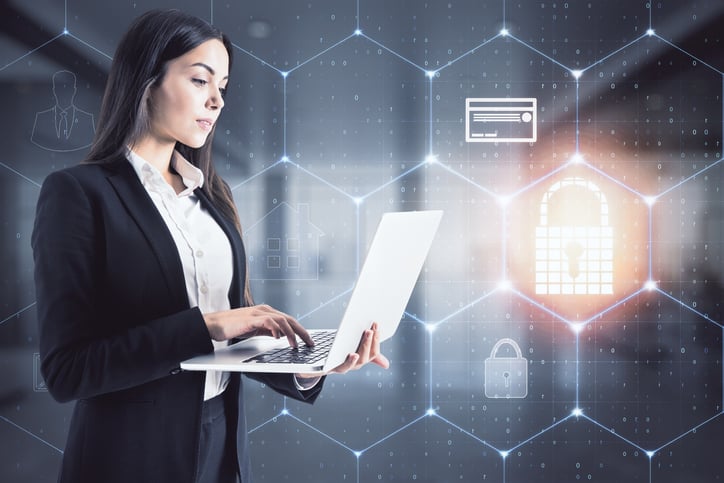Research has found that cyberattacks cost the world economy over $1 trillion annually.
In today’s internet-connected world, a cyberattack could attempt to encrypt, destroy or steal your data. How will your organization defend itself against malware and hacking attempts?
We’ll discuss two popular methods used to thwart networked security attacks: endpoint detection and response and traditional antivirus software. Each one continuously monitors for cyberattacks using different means. Which is a better defense for your organization?
What is an Endpoint?
An endpoint is a device connected to a network that sends and receives electronic communications. Businesses commonly have a wide variety of devices that are classified as endpoints. These include:
- Desktop computers
- Laptops
- Mobile devices
- Digital printers
- Internet of Things (IoT) devices including VoIP phones, sensors and HVAC controls
As technology has become more digital and connected, the number of endpoints in a typical business has also increased. And more endpoints means more opportunities for malware, viruses and hackers to enter a network.
If a cybersecurity breach happens, businesses risk the possibility of severe data collection disasters. Such risks as data encryption, ransom or loss to the highest bidder on the dark web are possible. Businesses must have in place an endpoint security solution to prevent these calamities.
Related: What is the Average Cost to Recover from a Cyberattack?
What is an Antivirus Software Solution?
In early internet days, hackers targeted endpoints with viral malware in the hopes of snarling communications and slowing operations.
Antivirus software (AV) is the traditional frontline defense against cyberthreats. It scans for threats, but it will only detect viruses that it’s programmed to find. This works well for known viruses but won’t detect new viruses until they’re known and the software is updated.
Therefore, this method could allow a newly created virus (zero day threat) to slip past the software undetected. Once detected at multiple companies, the virus signature will be developed and added to the list of threats.
What is Endpoint Detection & Response (EDR)?
Endpoint Detection and Response (EDR) is a solution to help protect endpoints in more sophisticated ways than what’s possible with traditional antivirus software. It’s a proactive, real-time approach using automation and artificial intelligence (AI) to quickly identify and respond to threats.
This is accomplished by scanning networked devices and searching for irregular patterns in disk, memory and CPU usage in addition to unusual activity. If malicious activity or odd patterns are found, it may be a sign that a hacker has breached the system and is trying to move across the network or elevate permissions.
If an area of concern is identified, the EDR tool will swiftly respond by isolating the endpoint and terminating suspicious processes. EDR security solutions even include the ability to deploy automated remediation or removal of the identified threats.
What’s the Difference Between EDR & AV?
The primary difference between these two methods of protection is their approach. AV is a reactive technology based on known virus signatures. This means the AV software manufacturer must already know that a certain virus was found and is ready with a signature to stop it.
With EDR, the software uses behavioral analysis to proactively search for abnormal activity within your system. EDR collects and analyzes data to determine threat patterns and alerts cybersecurity personnel if a threat is identified.
While there are similarities between EDR and AV, studies have shown that EDR is a more comprehensive cybersecurity solution. EDR will catch threats that AV will not.
Featuring benefits not found in traditional AV solutions, EDR typically includes:
- Advanced threat intelligence and threat hunting
- Better security visibility with enhanced data analytics
- Streamlined incident reporting for rapid responses
- The ability to create automated procedures for incident responses
EDR also detects and prevents advanced cyberattack methods including fileless, zero-days and ransomware.
Related: 10 Proven Ways to Secure a Computer Network
Should I Use EDR and Antivirus?
Generally an organization will choose to use either AV or EDR, not both. Being a more advanced and comprehensive solution, EDR’s proactive, multilayered approach and features for detecting suspicious activity provide superior cybersecurity.
Working with Elevity
Working with a trusted Technology Management partner such as Elevity offers the peace of mind your organization is searching for. Elevity provides best-in-class, industry-leading solutions that evolve with your organization — keeping your strategic business goals, growth and security top of mind.
Looking to get a handle on your current cybersecurity preparedness to see where you may have opportunities to strengthen your cybersecurity posture?
Simply click the link below to take our free Cybersecurity Risk Assessment. After just a few minutes, you’ll have a better idea about your cybersecurity preparedness and whether your systems are at risk.





%20cropped.jpg)




